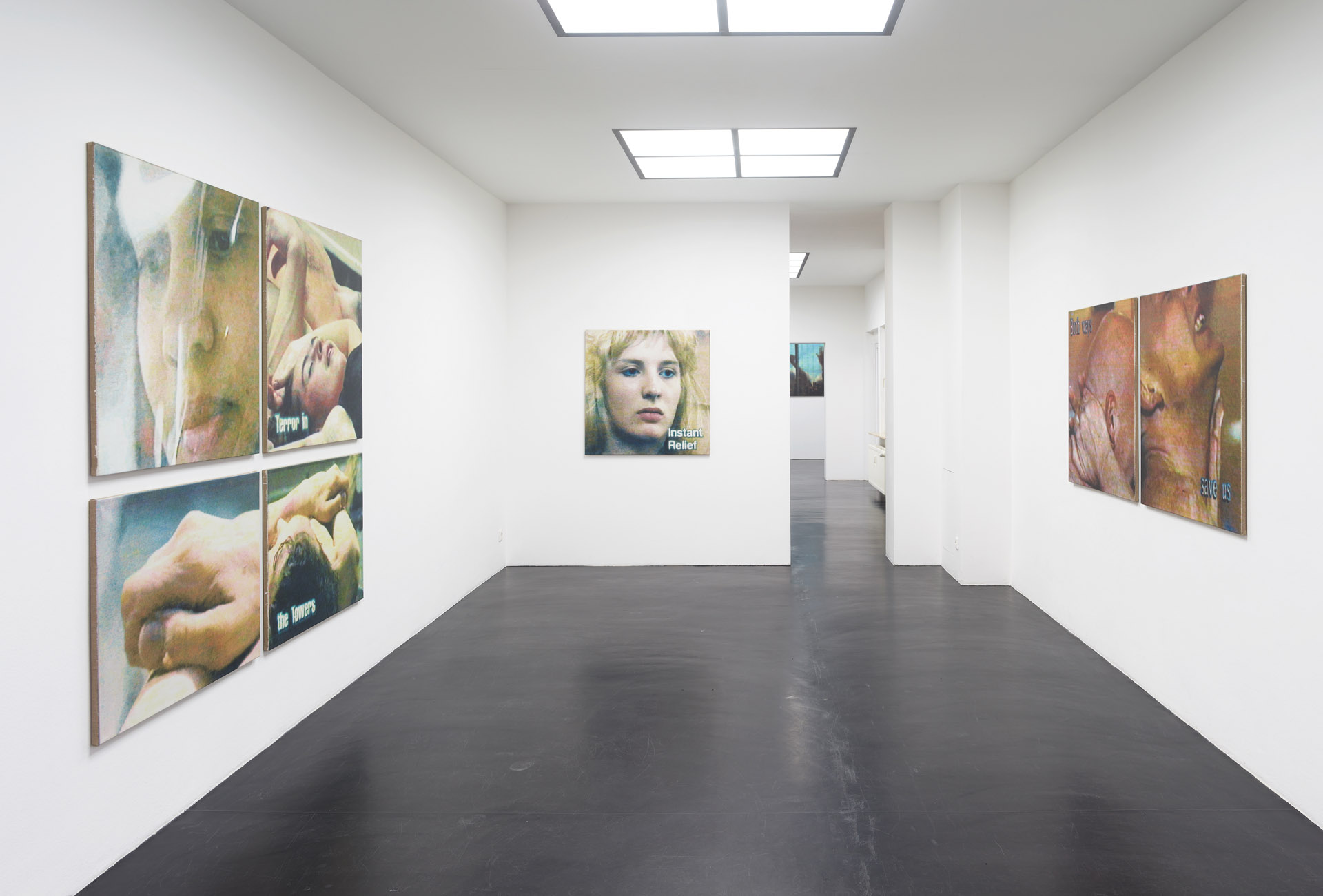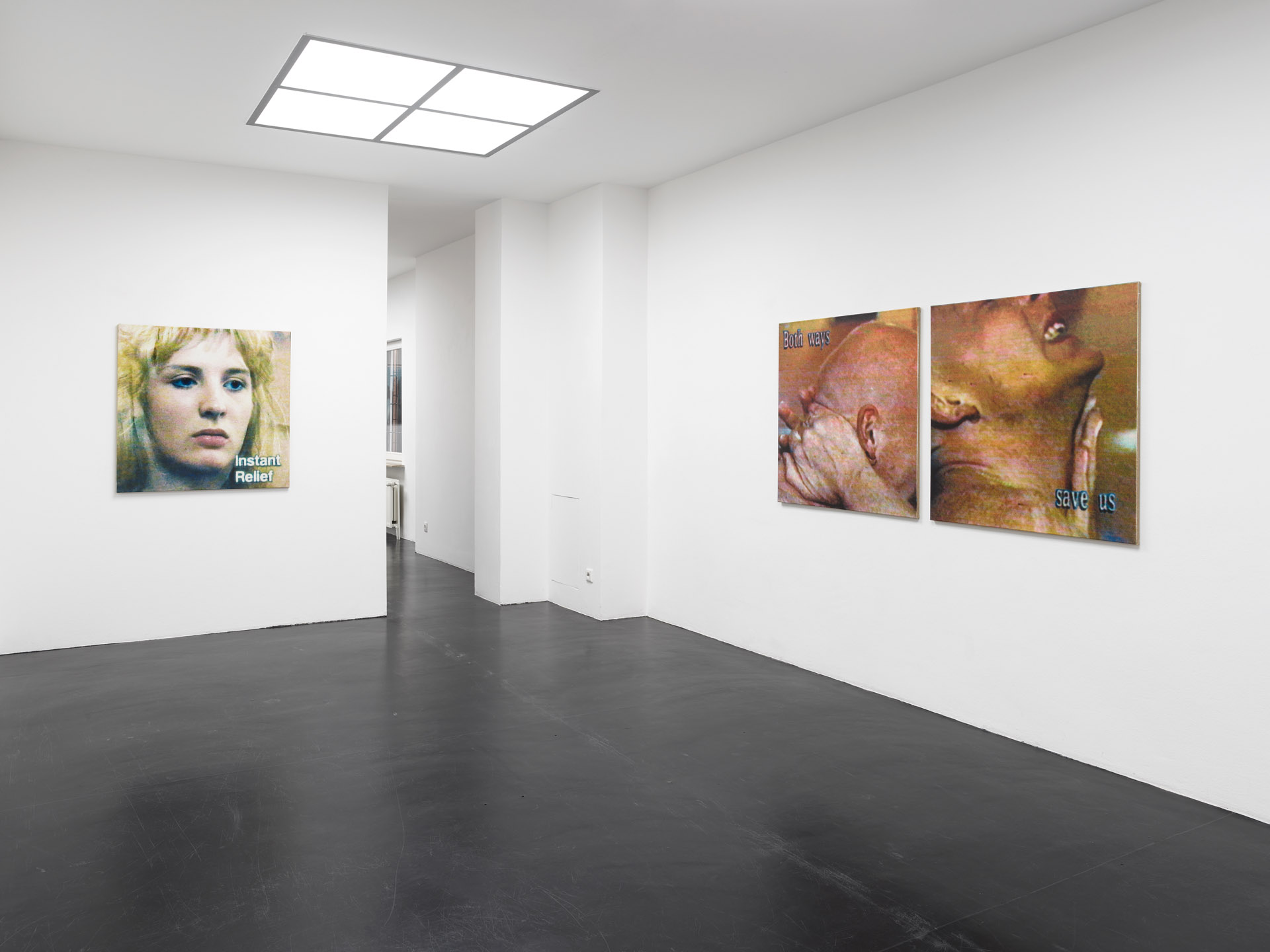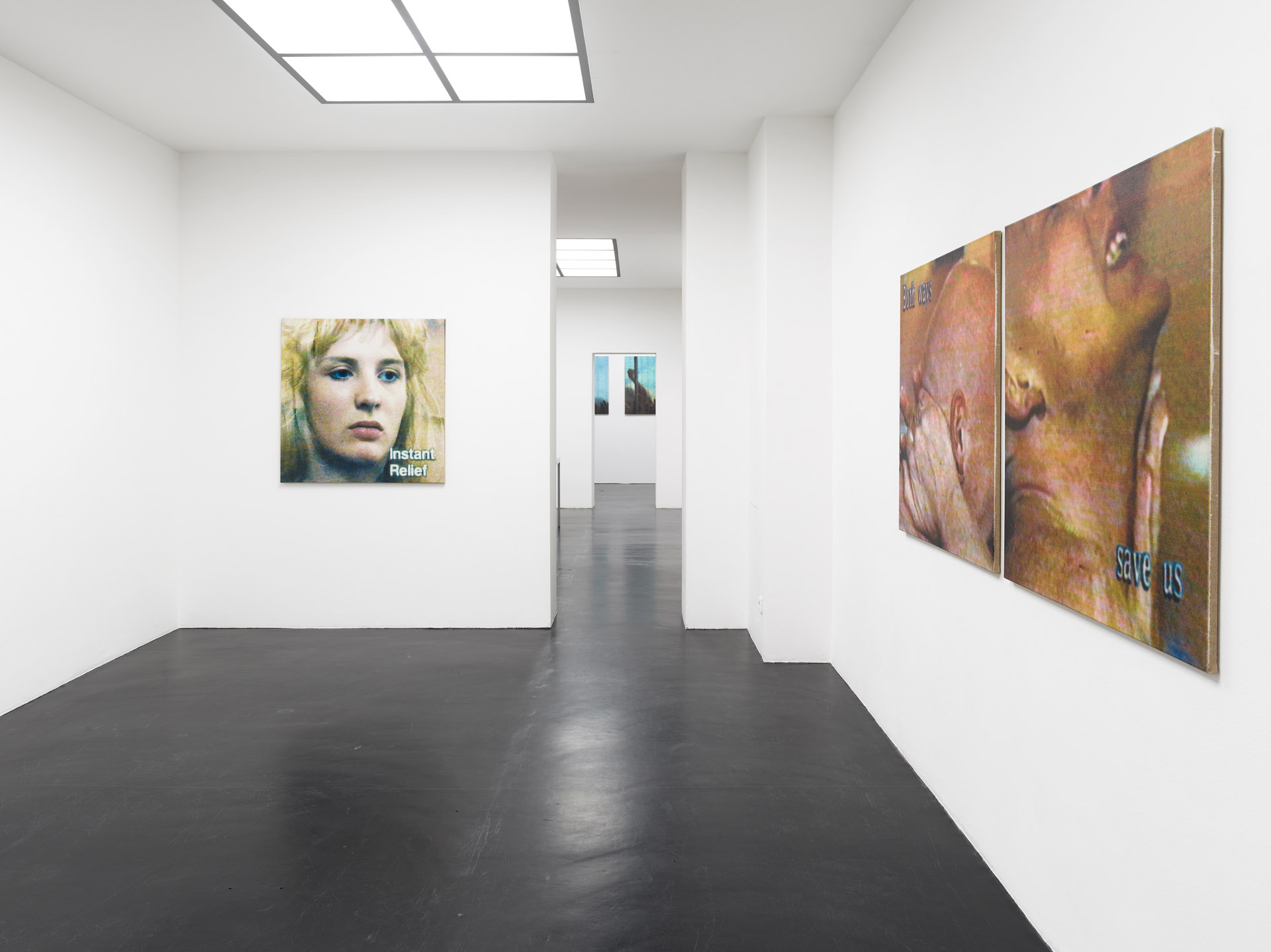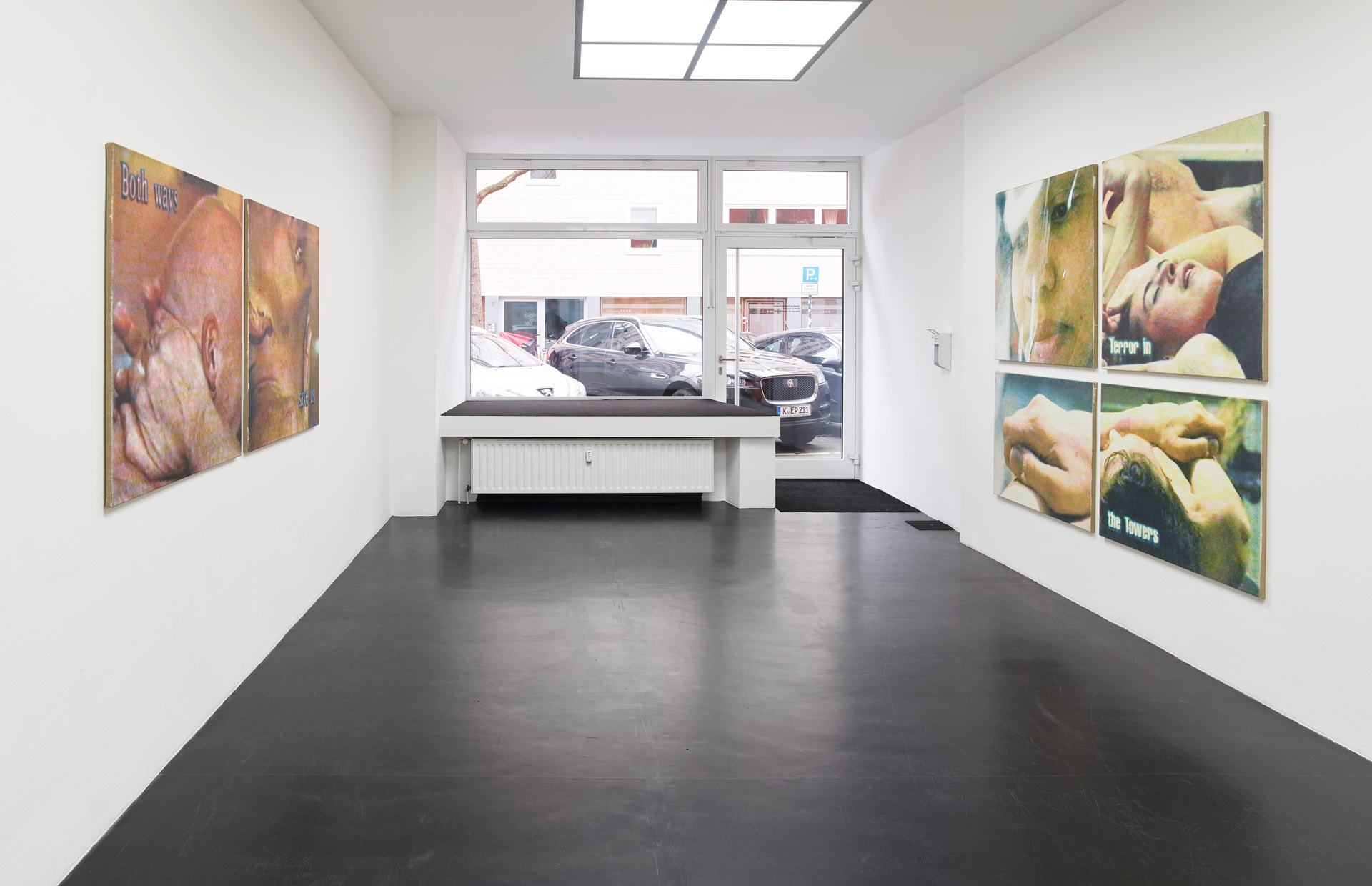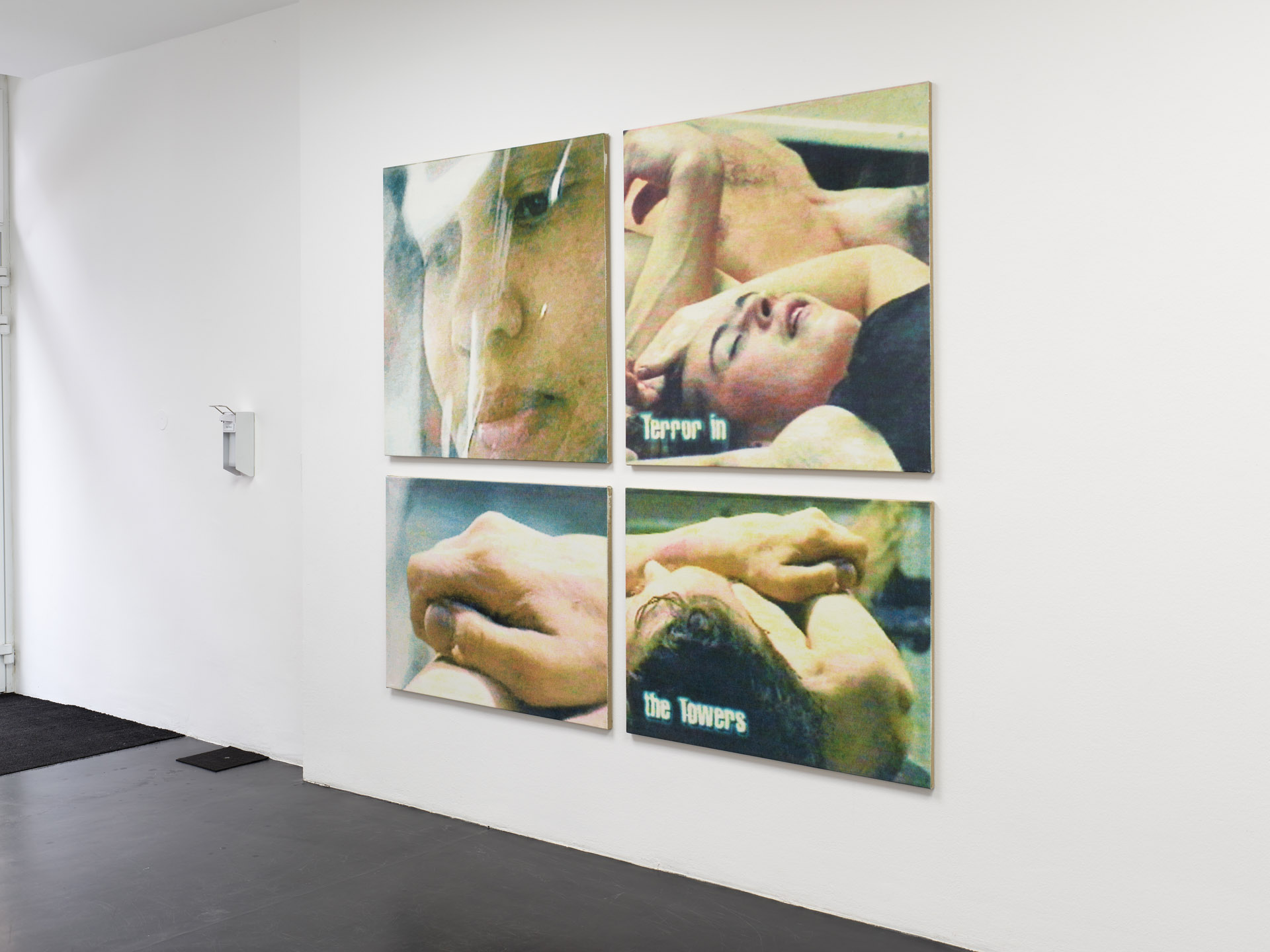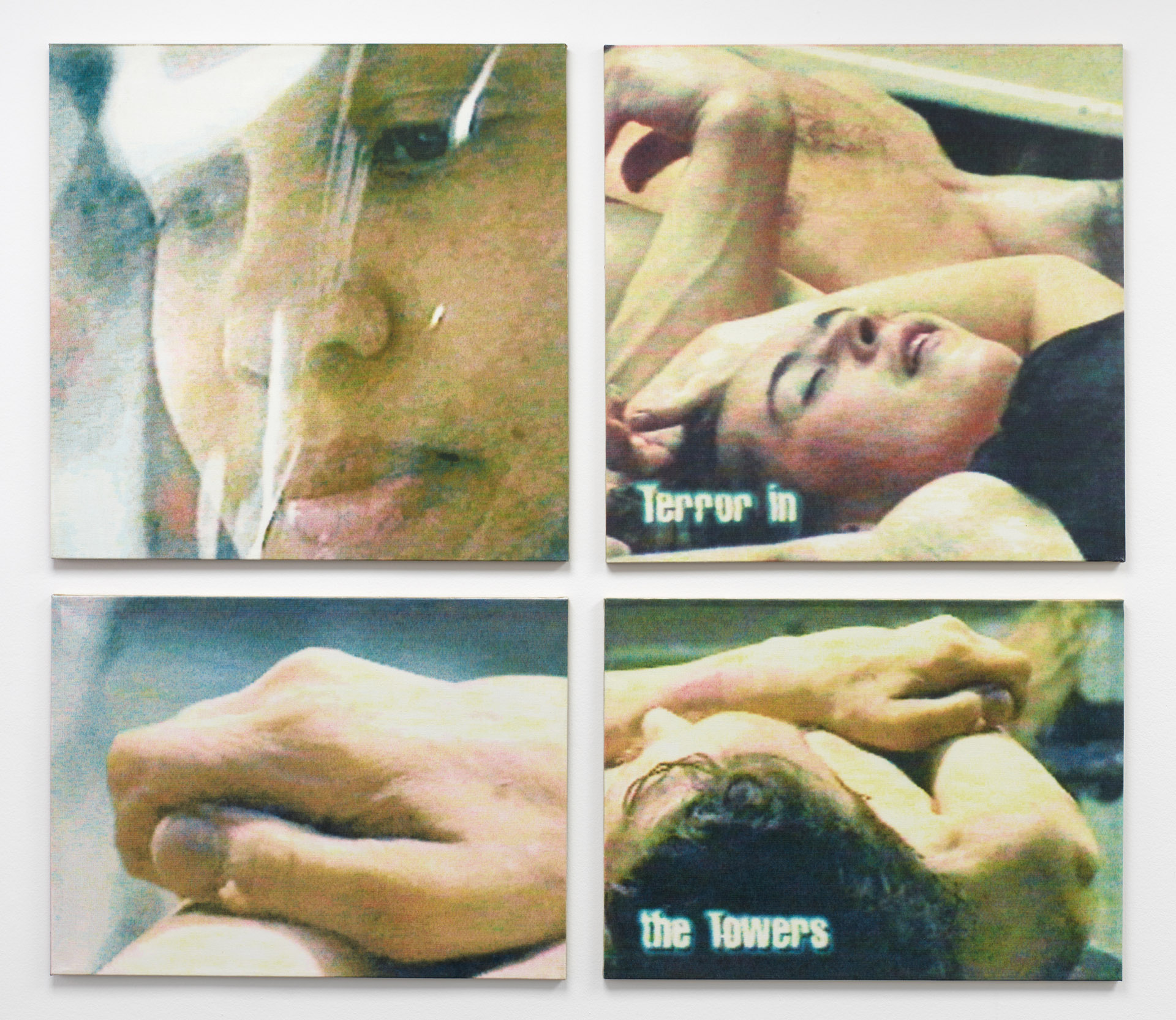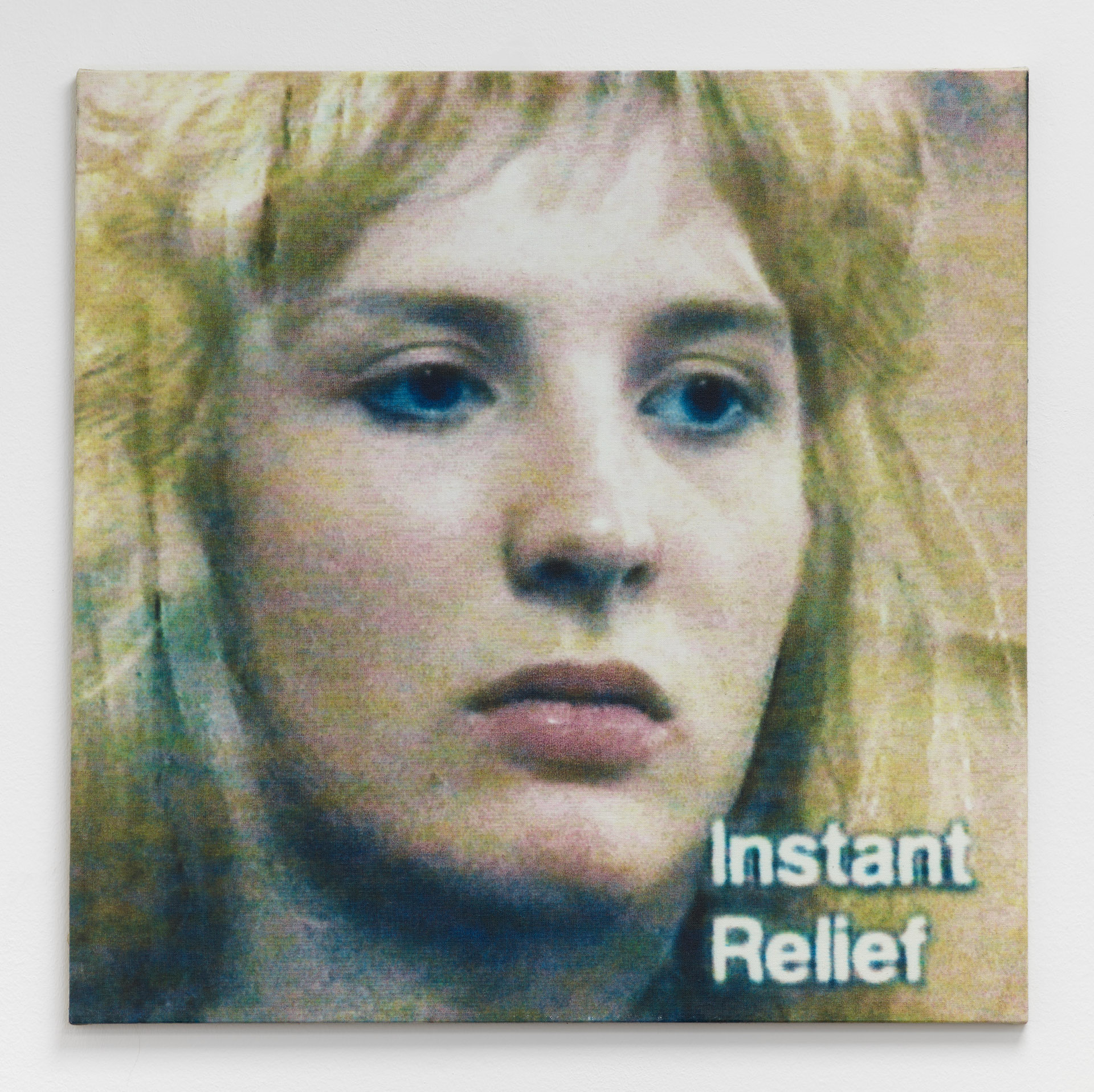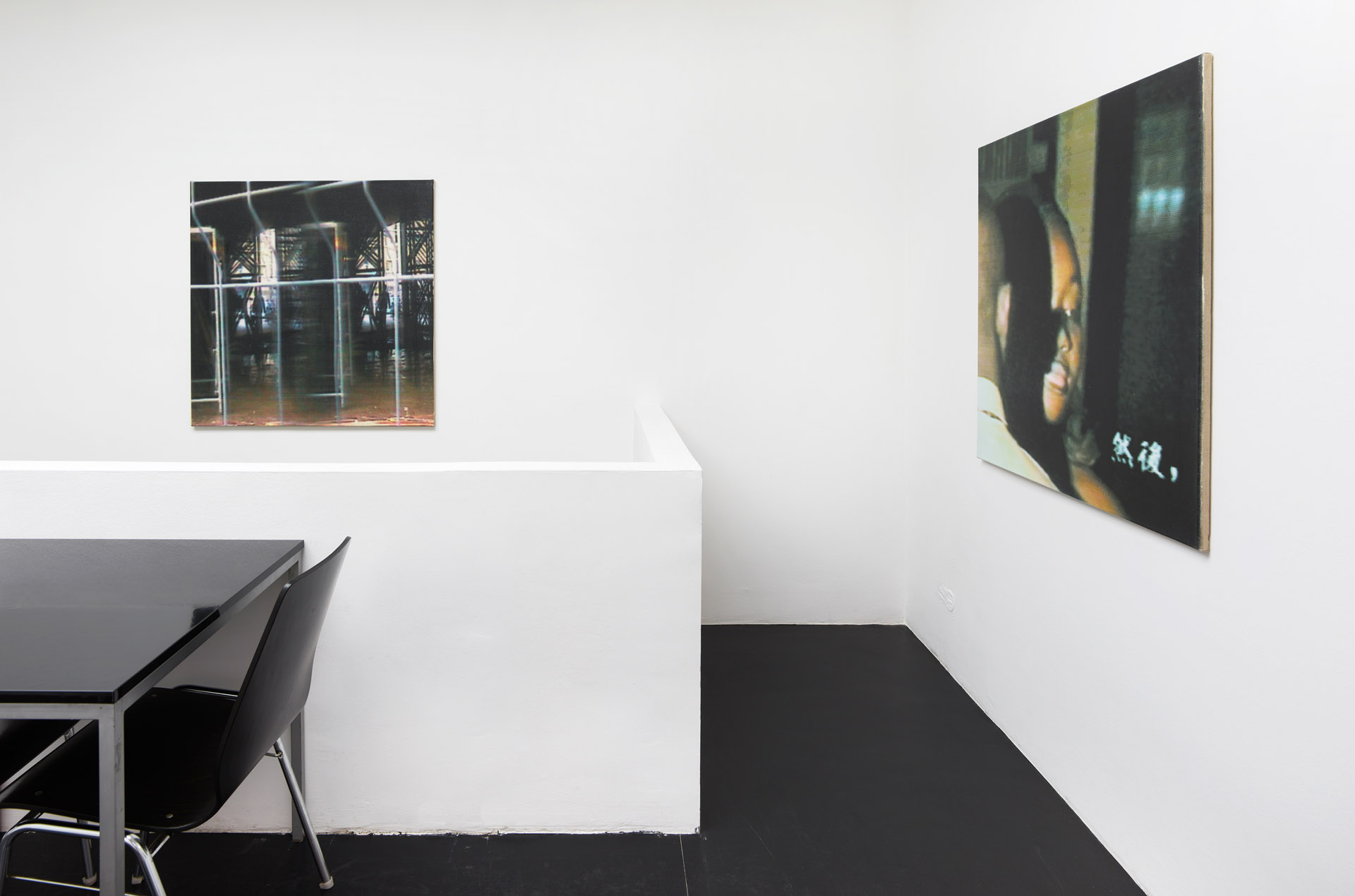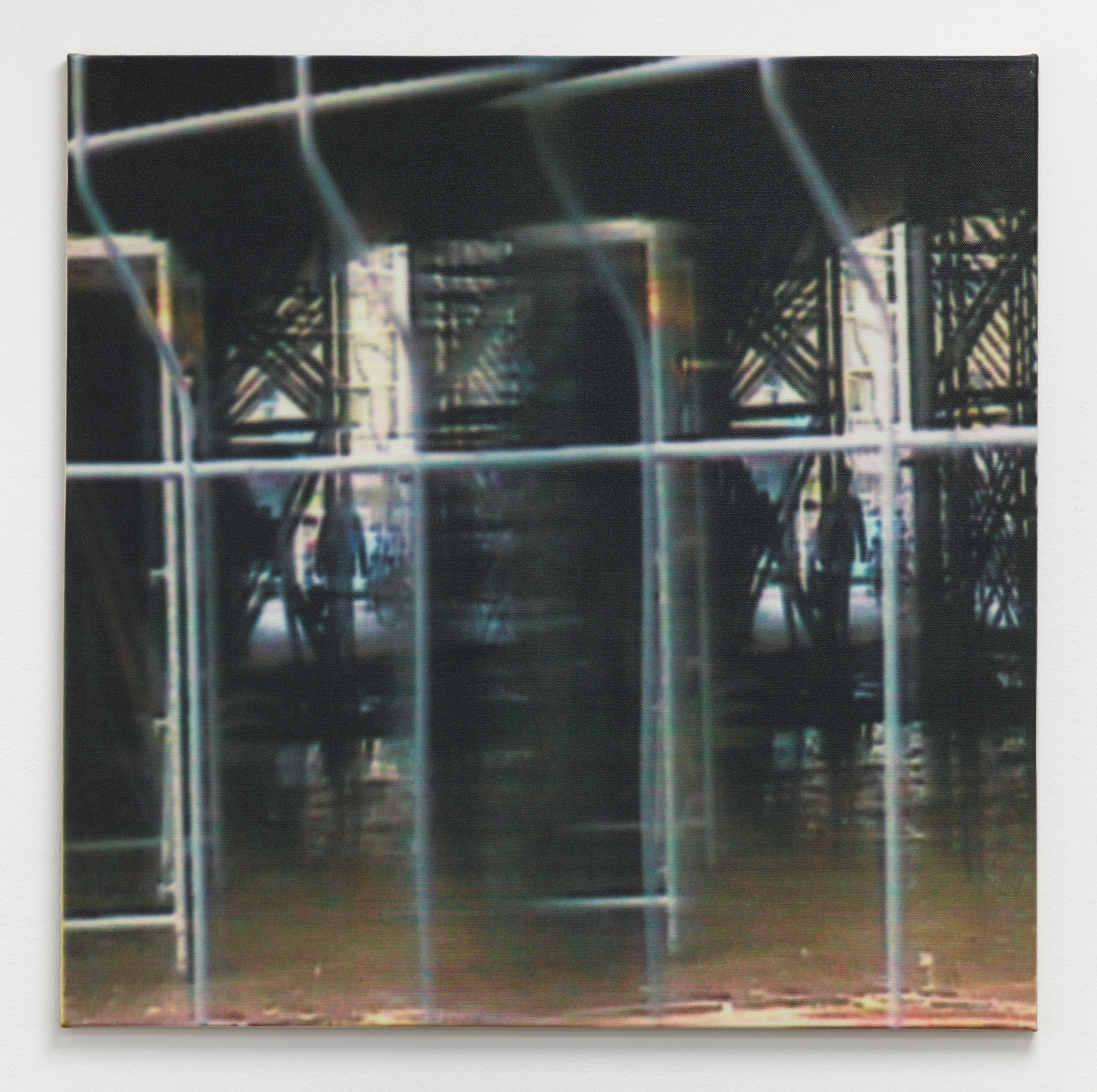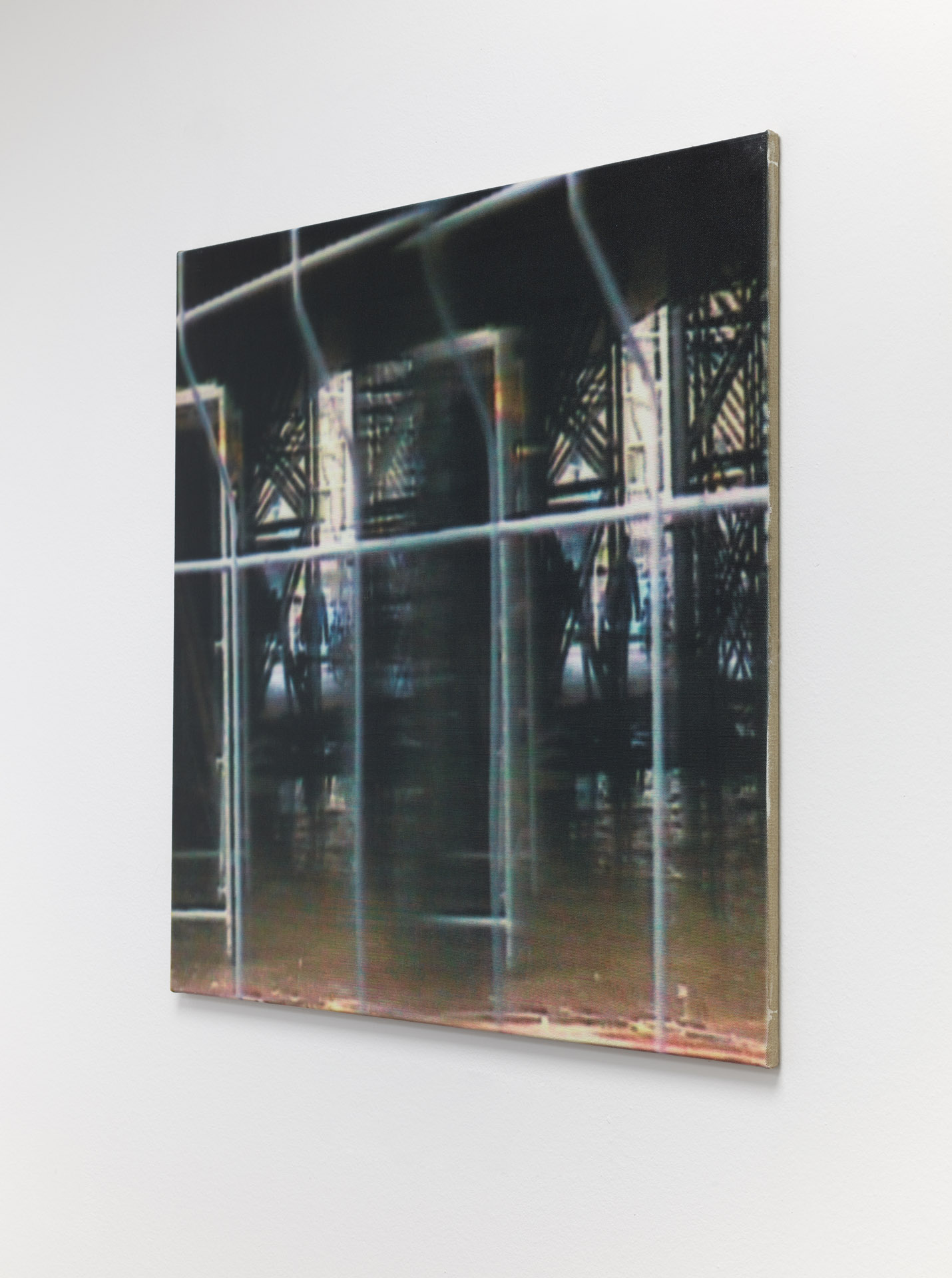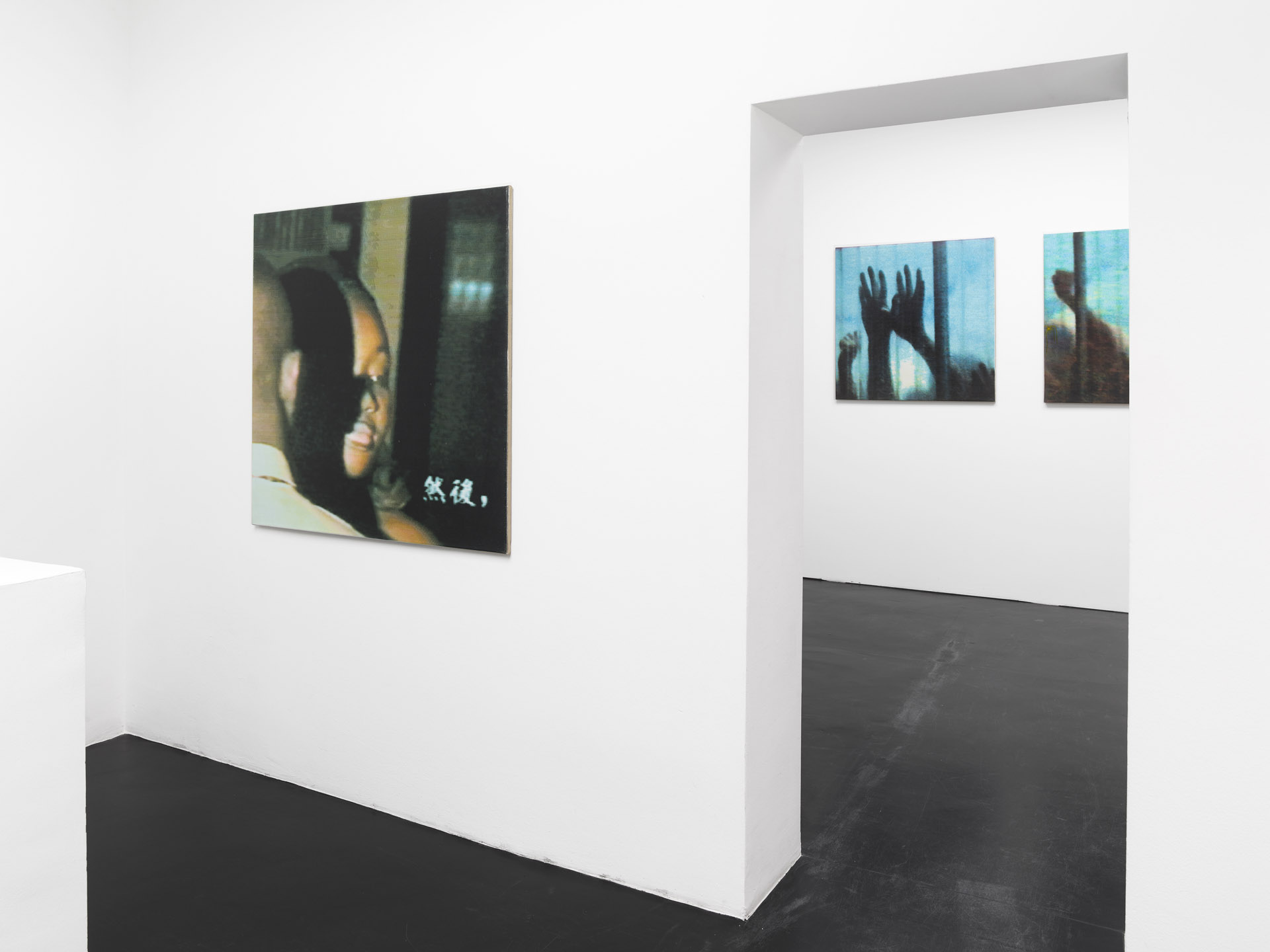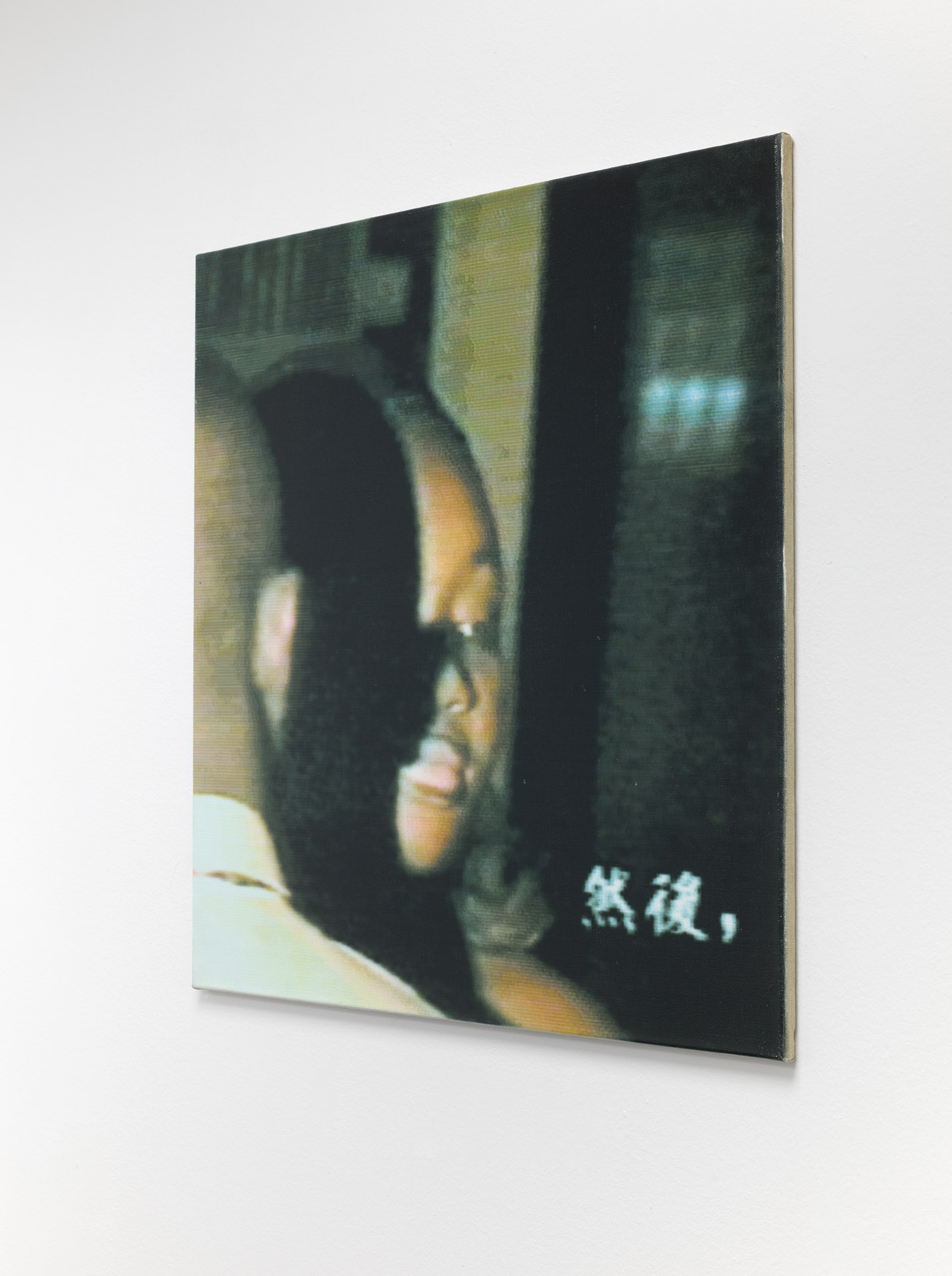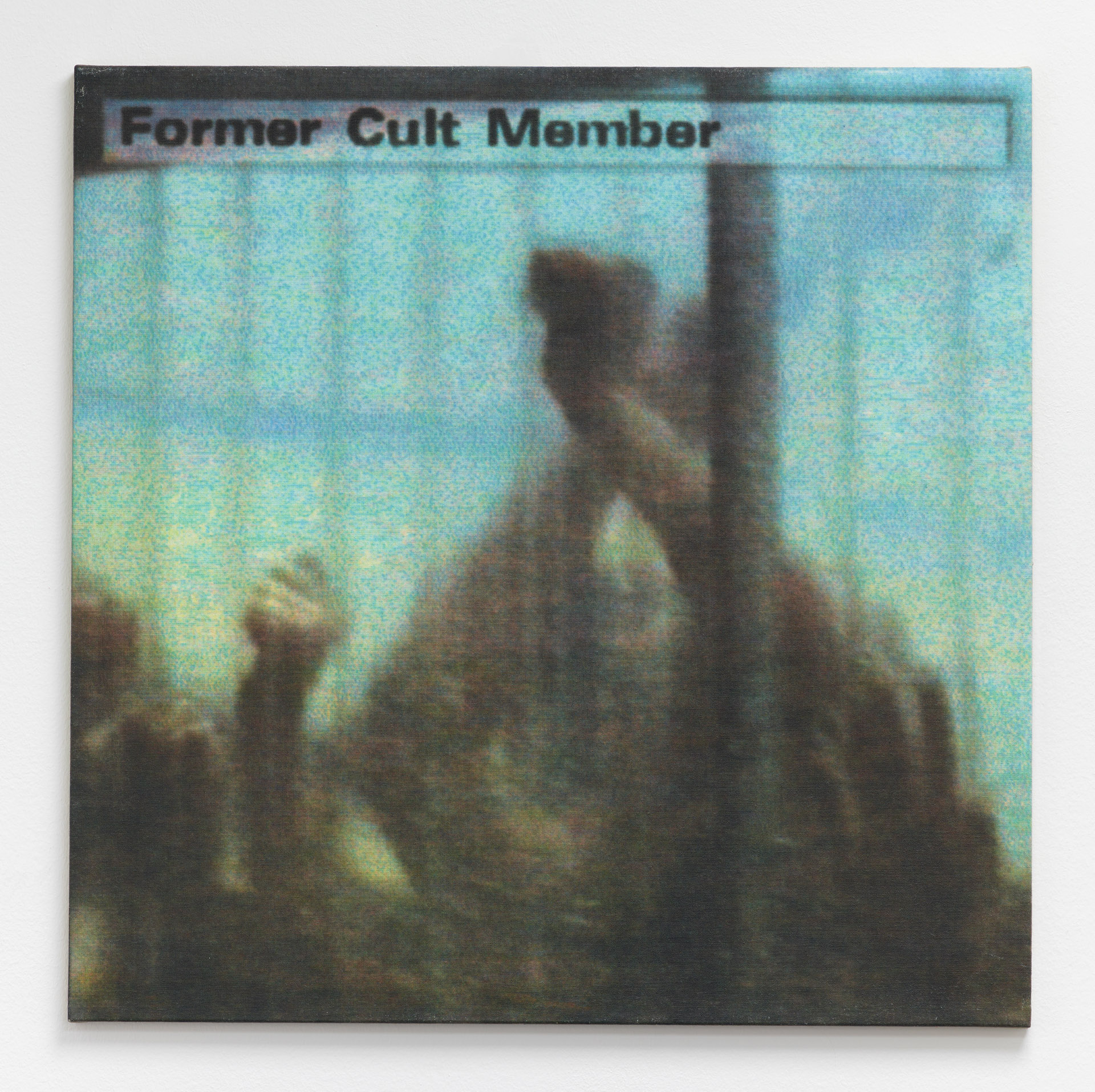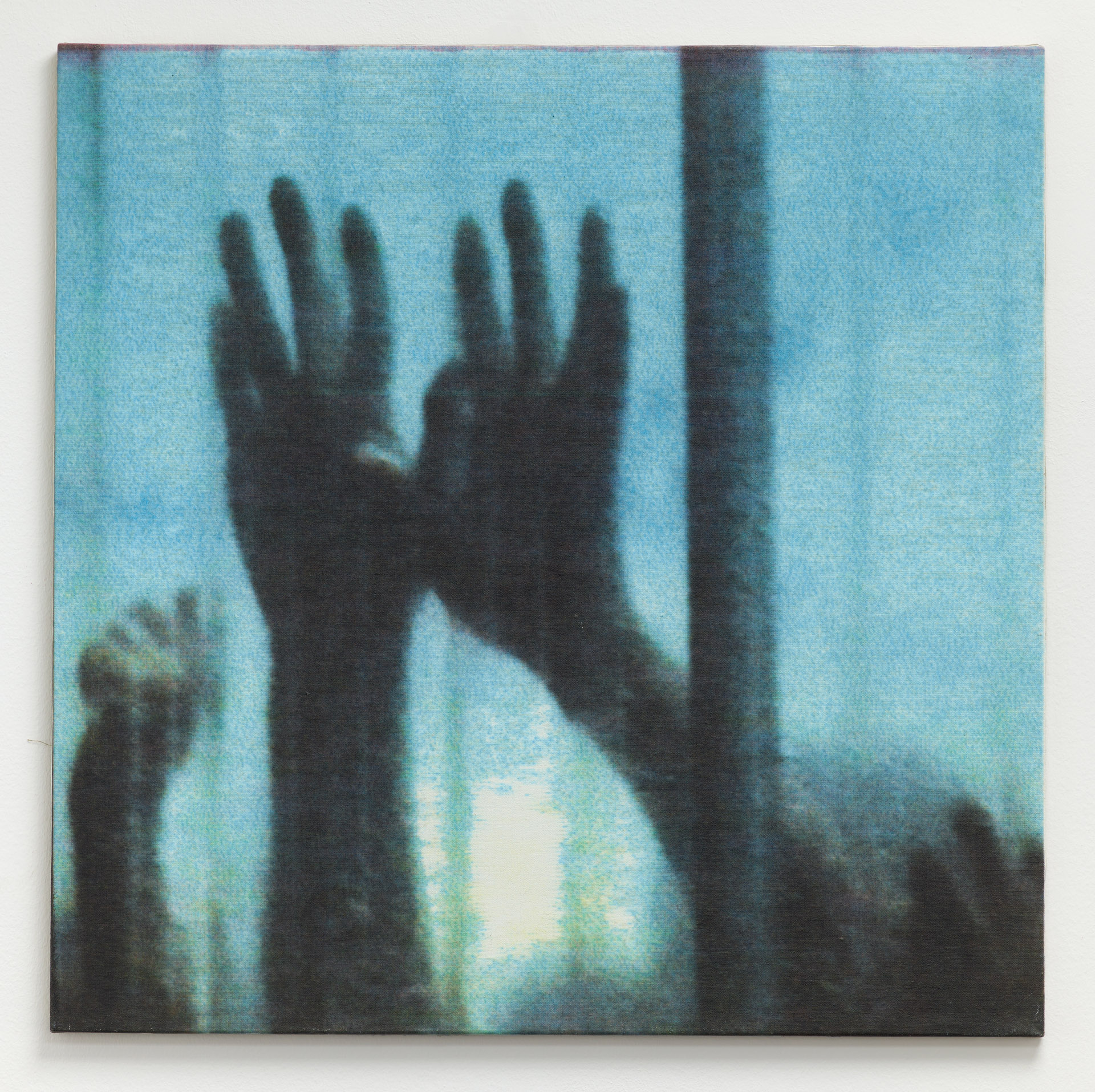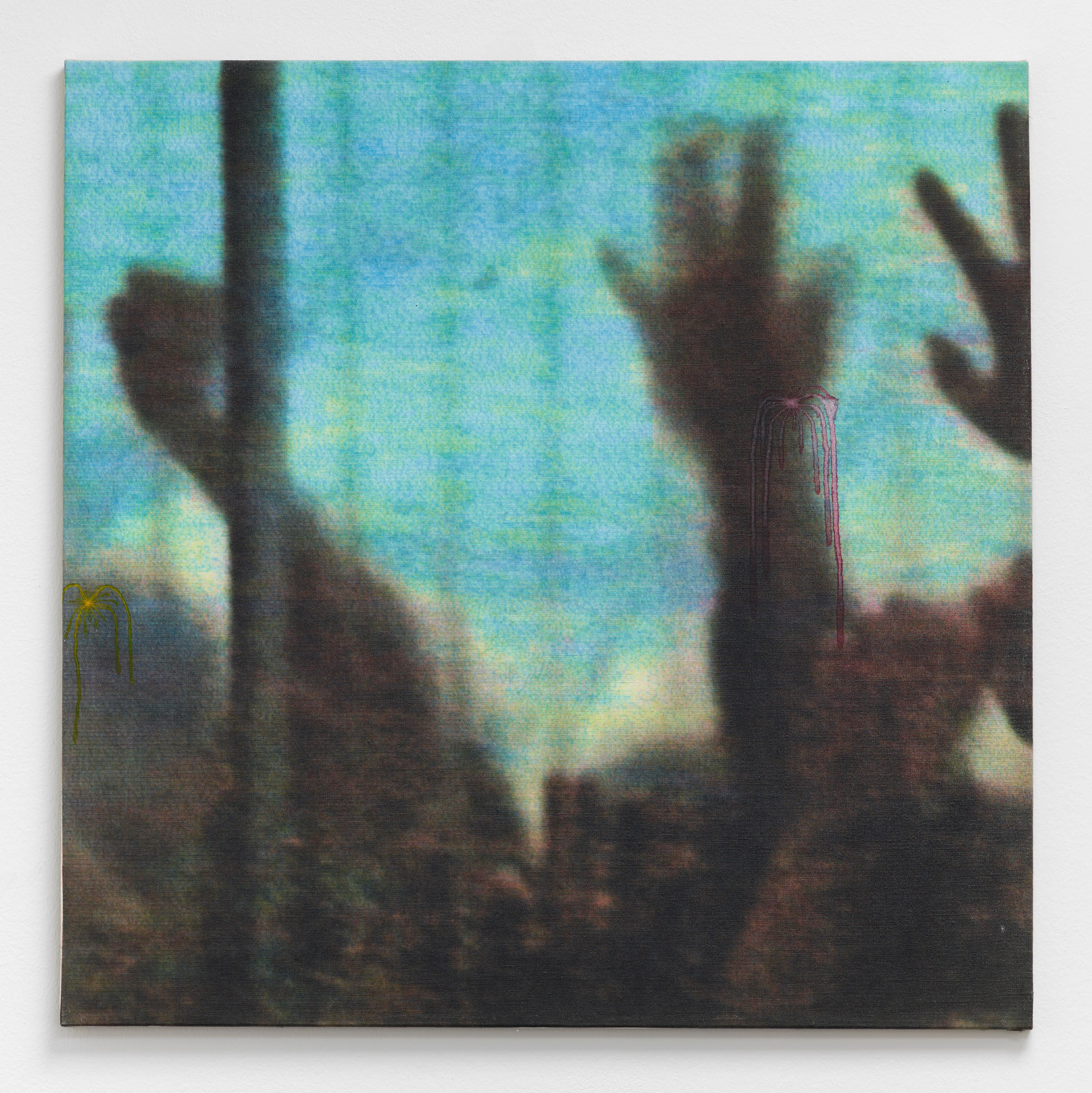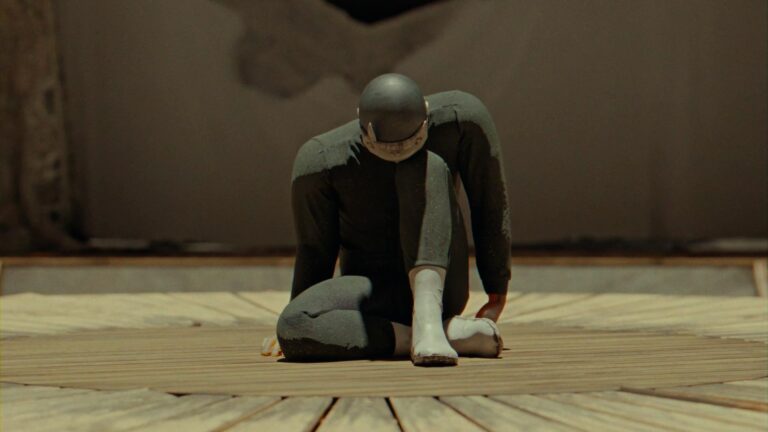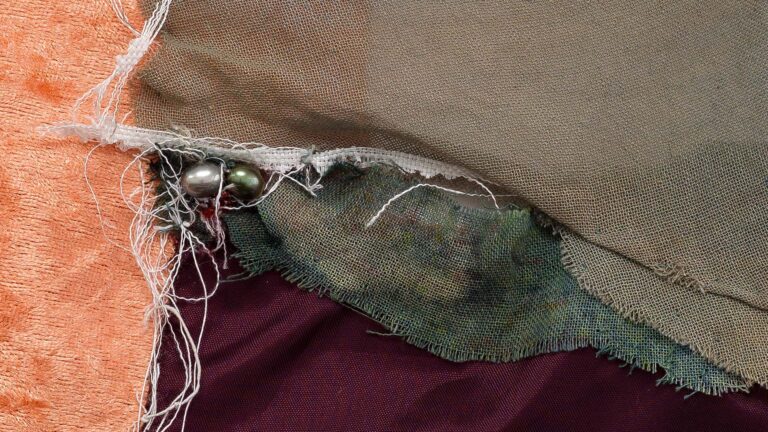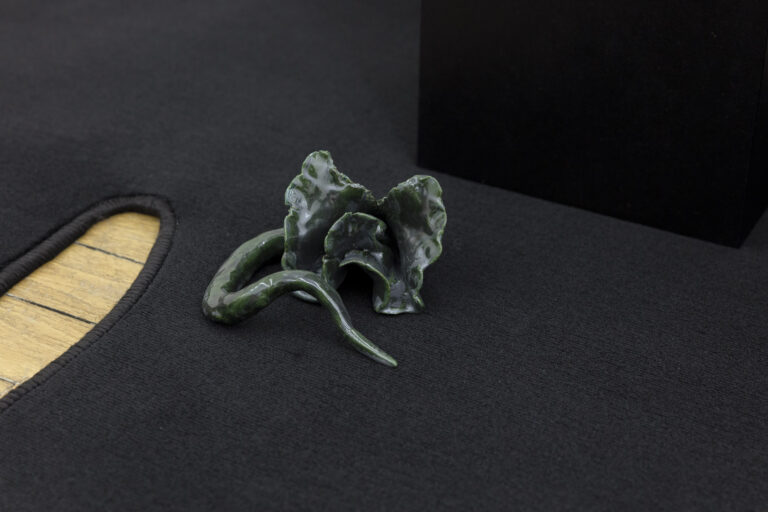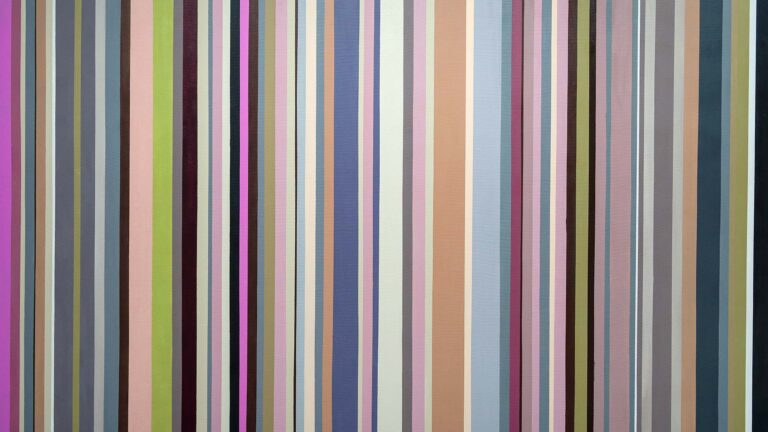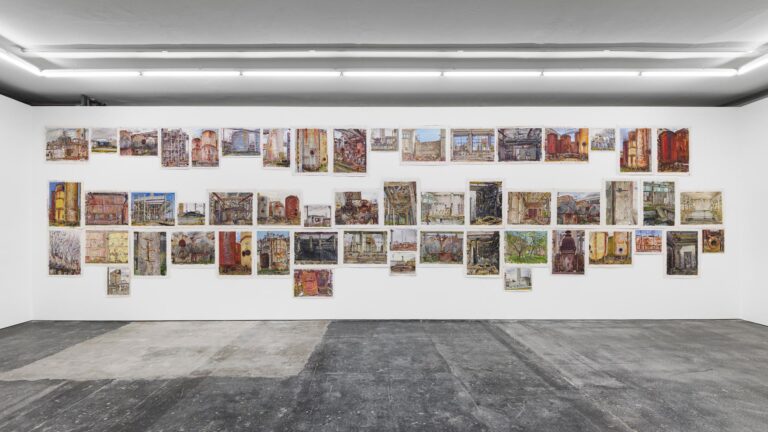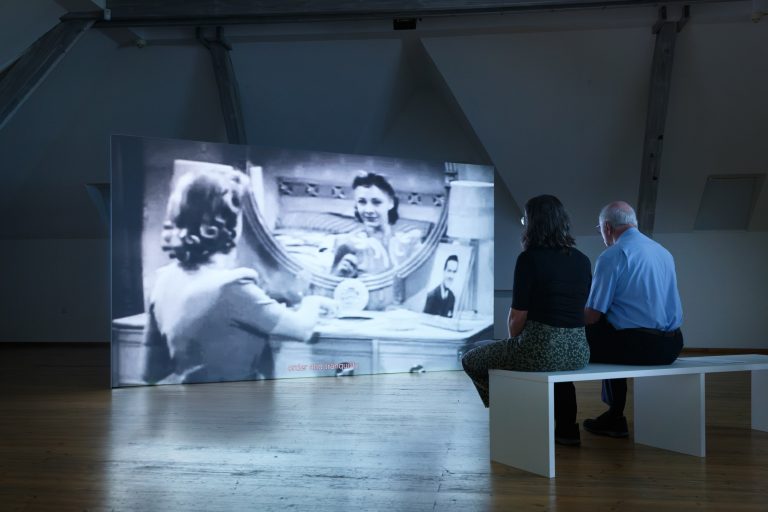Artist: Matthias Groebel
Exhibition title: Satellites Cast No Shadow
Curated by: Andreas Selg
Venue: DREI, Cologne, Germany
Date: February 10 – April 16, 2022
Photography: all images copyright and courtesy of the artist and DREI, Cologne
Like Tears in Rain:
Matthias Groebel’s Replicant Paintings
Cologne in 1990. Over a decade of painting’s temperamental, triumphant and facetious return has resulted in what, with reference to the work of Martin Kippenberger, has been called the “post-studio practice”. This means that paintings achieve their true value and significance only after they leave the studio and emulsify with the artist’s persona as it is performed in the “art scene”, a particular network of people and locations which (mal-)functions by the Domino-logic of if you know, you know. The problem with that, of course, is that over time you forget what exactly it is you know and how you know it. What is a painting, really, and what does it do? It was in this context, where the material reality of the painting was all but overwhelmed by the subjectivity of the artist, that Matthias Groebel stopped painting, and built a machine, which would remove from the canvas, once and for all, the human touch.
Blade Runners, per Ridley Scott’s 1982 film, are police officers charged with policing the boundaries of the real. It’s a position at the threshold to liminality, at the defining limits of humanity. What arises at this existential abyss is a vertiginous distinction between the humans understood to be “real”, and the so-called replicants who, though they look and seem human, or even slightly better (watch Darryl Hannah do a triple backflip), are somehow not real. Blade Runners are trained to tell the difference that no one else sees, but the replicants have become too sophisticated—“decommissioning them”, as it is called, starts to feel more and more like murder.
Groebel’s paintings, in a way, are replicants: of TV images, of paintings, and, at this point, of a certain version of the past. Not the past that belongs to the future as it played out, but a different one, all but lost and in the eleventh hour vying for a place in the world. Are they real paintings, though he has not painted them? Are they real film stills, though their context has vanished? Groebel does not remember where they even came from, and some have been edited: cropped, deliberately awkward, an errant lock of hair added, or an incongruent caption. Look at these paintings in real life—if we accept the premise that some experiences of life are more “real” than others—and see that they exhibit something more than the a priori loss that photographs and prints are ontologically limited to; more, too, than the quaintness of aged technology. Rather these paintings manifest themselves as beings in the world. Stubborn and irreplaceable, they look back at you through layers of paint like Blade Runner’s tragic, rain-soaked and vindictive villain, never really born and not supposed to be alive, not supposed to have been rescued from the stream of long-gone, throw-away images, but now they have been, and then what? They are a kind of miracle, a body fallen down in front of the viewer with a plonk, there it is: what Roland Barthes called, with reference to music, “the grain of the voice”: the undecidable element that exceeds culture and technology. Let’s remember that traditional painterly dexterity is of course just as much a form of technology as a painting machine is.
But the “grain”, wrote Barthes, “is the body in the voice as it sings, the hand as it writes, the limb as it performs.” So how is it that we find in these paintings, made by a machine, that grain: hope and excitement and desire conserved like corpses in a bog? So human, we think, so severe in their presence. In Ridley Scott’s film, the Blade Runner falls in love with one of the replicants and they drive off into the sunset as they wait for her to die her programmed death (an existential condition, the film is quick to point out, she shares with “real” humans). And so we too might fall in love with these replicant paintings, though they are not the children of parents but of a meeting between nascent technology pure serendipity. But how?
It is partly because they are the outcome of a technologically reproducible image plus time, a calculation that totals at nostalgia: desire so obscured by memory it looks like reality, only in the past tense. There is in Ridley Scott’s film likewise a surprising intimacy to the handmade (pre-CGI) model of Los Angeles in a now already past 2019; something moving about the future as it was imagined, how technology was thought to effect our lives, and the questions it was thought to ask us. There are video calls, but from stationary pay phones. A replicant, who doesn’t know herself to be one, offers photographs of herself from when she was a child as a kind of proof that she was born by other humans and not in a lab. But these memories are manufactured, the pictures not real. Photographs—it is clear now, as clear as the outmodedness of payphones—cannot be the evidence of anything, but are neither more nor less than expressions of desire, indulgences in pastness. Still, the replicant remains, and not only can she be desired, she can be had, and the Blade Runner has her. In nostalgia, the grain of an old photograph, or VHS tape, or anything timeworn at all, can produce something that resembles the grain of the voice. It is memory’s tune played in an ironic key, a name for something we never had; not a reference to a specific memory, but to the idea of memories as such. This is another way that Groebel’s paintings are replicants: they are almost-familar, almost-memories, awarded solid bodies produced on their own mechanic terms.
While nostalgia accounts for the melancholy we find in these works, and their powerful sense of uncanniness, what, in the end, is the outline of an absence, does not quite capture the fullness of whatever it is we feel for this body, plonked down in front of us. A helpful aid is Felix Guattari’s concept of “machinic eros” developed in a series of writings on Japan. In the 70s and 80s, and as Blade Runner clearly testifies, Japan served as a repository for a Western fantasy of the technological future, suffused equally with fascination and fear. In Scott’s vision, L.A. in 2019 is not in California but in Asia—America, it seems, has no place in the future. Our future childhoods, wrote Guattari, are becoming Japanese. He suggested that the the Japanese future, proud and forceful and amnesiac, is driven by a desire to be “in the thick of things”, and this is what he called machinic eros: to find oneself awash in a flood of images, at the centre of a rush into the next moment, of a merging of “analogical iconicity and “digital” discursivity”. This is a perfect descriptor for what Groebel tapped into with his machine paintings, likewise iconic, and glowing with a kind of animist power. Their being “in the thick” is a literal thickness; a constant stream of transitoriness, held—impossibly—still. Guattari loved Japan for its warped version of capitalism, the poetry of its consistently lost, yet unfolding future. In a different corner of the globe entirely, the BDR Rhineland, Groebel was quick to produce a body of work capable of capturing the spirit of another already lost future, barely taken shape. These paintings, these faces, salvaged from haywire talkshows and street reportage, which, as one of the replicants so beautifully puts it, ought to have been “lost to time, like tears in rain”—is it possible that we see in them both the confusion and the optimism of the new world order of the 90s, its budding technologies, and their promises, so soon let down?
Time is a fluid, fictional, volatile thing; tears in rain a fragile construction. If post-studio painting relies on the maintenance of the artist’s myth for both its significance and signification, what keeps Groebel’s replicants alive? To the previous calculation image-plus-time, we can add another factor: selection. The production of these works depends on the more or less incidental choices made by a series of more or less knowing agents: those who decided what footage to fill the hours with on some rogue channel in 1990; Groebel himself as he played back the image stream in his head, as one scrambles to recall a dream; and finally Andreas Selg, who, so many years later, chose the constellation of paintings on view, first in Zurich and now in Cologne. When these works continue to stir, it might have something to do with how the methodology by which they were created—this series of decisions—can be replicated without slippage, and make the works anew. When Selg selects from Groebel’s store of machine paintings, he is performing the same gesture as Groebel did all those years ago, picking frames from hours of tape recordings. The status of the images as somehow “found” is what allows them to be found again, as well as what—per the surrealist logic of the objet trouvé—enables their appeal, across time, to our subconscious. In the end, just as sci-fi fantasies of the future really speak of the present, and fabulated non-humans actually tell us of ourselves, so the objects, paintings or otherwise, made by machines, or the images that come to us as if out of nowhere, orphaned, contain the negative imprint of artistry and deliberation. Real paintings: Matthias Groebel’s machine describes that idea so perfectly it takes a Blade Runner to tell the difference.
-Kristian Vistrup Madsen, 2022
Matthias Groebel, Satellites Cast No Shadow, 2022, exhibition view, DREI, Cologne
Matthias Groebel, Satellites Cast No Shadow, 2022, exhibition view, DREI, Cologne
Matthias Groebel, Satellites Cast No Shadow, 2022, exhibition view, DREI, Cologne
Matthias Groebel, Satellites Cast No Shadow, 2022, exhibition view, DREI, Cologne
Matthias Groebel, Satellites Cast No Shadow, 2022, exhibition view, DREI, Cologne
Matthias Groebel, L0599, 1999, Acrylic on canvas, Diptych, each: 95 × 95 cm
Matthias Groebel, Satellites Cast No Shadow, 2022, exhibition view, DREI, Cologne
Matthias Groebel, L0795, 1995, Acrylic on canvas, Four parts: 175 × 200 cm
Matthias Groebel, Satellites Cast No Shadow, 2022, exhibition view, DREI, Cologne
Matthias Groebel, Untitled, 1995, Acrylic on canvas, 95 × 95 cm
Matthias Groebel, Untitled, 1995, Acrylic on canvas, 95 × 95 cm
Matthias Groebel, Satellites Cast No Shadow, 2022, exhibition view, DREI, Cologne
Matthias Groebel, Untitled, 2003, Acrylic on canvas, 100 × 100 cm
Matthias Groebel, Untitled, 2003, Acrylic on canvas, 100 × 100 cm
Matthias Groebel, Satellites Cast No Shadow, 2022, exhibition view, DREI, Cologne
Matthias Groebel, Satellites Cast No Shadow, 2022, exhibition view, DREI, Cologne
Matthias Groebel, Untitled, 2001, Acrylic on canvas, 95 × 95 cm
Matthias Groebel, Untitled, 2001, Acrylic on canvas, 95 × 95 cm
Matthias Groebel, Untitled, 1994, Acrylic on canvas, Four parts, each: 95 × 95 cm
Matthias Groebel, Untitled, 1994, Acrylic on canvas, Four parts, each: 95 × 95 cm
Matthias Groebel, Untitled, 1994, Acrylic on canvas, Four parts, each: 95 × 95 cm
Matthias Groebel, Untitled, 1994, Acrylic on canvas, Four parts, each: 95 × 95 cm
Matthias Groebel, Untitled, 1994, Acrylic on canvas, Four parts, each: 95 × 95 cm
Matthias Groebel, Satellites Cast No Shadow, 2022, exhibition view, DREI, Cologne


